![]() The ExtendSim Team wants to support nonprofit organizations and their innovative research projects. In response, we established the ExtendSim Nonprofit Research Grant program.
The ExtendSim Team wants to support nonprofit organizations and their innovative research projects. In response, we established the ExtendSim Nonprofit Research Grant program.
Under the Grant, we support nonprofits by subsidizing the cost of a full Model Developer Edition of ExtendSim. In exchange, the nonprofit provides to ANDRITZ Inc. the ExtendSim models and related documents it has created for publication on the ExtendSim web site.
Nonprofits having a 501(c)(3) status with the Internal Revenue Service (IRS), are eligible to apply. Projects should seek to create systemic change, strengthen the nonprofit sector, or seek to improve communities or the environment.
apply for an Nonprofit Research Grant ![]()
update an existing Nonprofit Research Grant ![]()
Current Nonprofit Research Grants
Improving Resourcing Decisions for Homelessness Intervention & Prevention
Modeling the Indianapolis Homelessness Provider Network
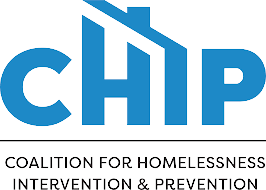 Phillip Poor & Scott Sheehan
Phillip Poor & Scott Sheehan
Coalition for Homelessness Intervention and Prevention
Indianapolis, IN
Grant awarded: January 7, 2021
To be completed: June 2022
New completion date: October 2022
Project
Modeling flow rates and capacity of the provider network will enable improved resourcing decisions and make Indianapolis's homelessness intervention and prevention efforts more effective.
Description
Have already created network map of current landscape. Plan to model current situation to identify pinchpoints and inefficiencies. Also plan to model assumptions associated with looming foreclosure crisis.
Questions this research will answer
- How can we better structure our network to improve housing outcomes?
- How can we better communicate with government and other stakeholders to ensure the most impact from future investments/grants?
How research strategy will be designed to help answer these questions
Will take the current map and run simulations to understand current capabilities and shortcomings with normal variations in inputs. Will then pressure test system with models based on foreclosure assumptions.
How ExtendSim will be used in this project
ExtendSim will be the key modeling tool and communication tool for understanding the current system, needs, and future requirements of the provider network.
What is unique about this project?
To my knowledge, I am not aware that any other city has attempted this approach beyond simple network mapping.
How will this project help others?
This is an opportunity to make a significant contribution for the benefit our most vulnerable population.
What impact will this research make to the existing current state of knowledge?
We believe, that if successful, this approach can be adopted by other cities.
Updates
2022 • Quarter 2 progress
 The model was planned for three phases:
The model was planned for three phases:
- System Load
- System Flow
- System Resource Integration
This quarter (and last) were used to fine-tune the Loads and Flows based on detailed data becoming available.
The model effectively is 90% complete less some trending of historical data to added stochasticity to the model for better predictive outcomes. The goal is to identify predicted "needs" for beds for various household demographics that are experiencing homelessness, as well as to study possible weaknesses if a spike in load were to occur.
2021 • Quarter 4 progress
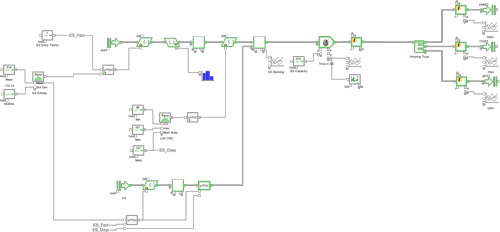 The model is being built in roughly three phases:
The model is being built in roughly three phases:
- System Load
- System Flow
- System Resource Integration
There is the understanding no one phase is distinct or independent, but each phase, however, is a unique set of data to interpret to where this general plan is sensible.
The majority of Q4 focused on validation/verification of the model to the actual data at hand. This process revealed more raw data (vs. lumped data) was necessary to produce the predictive process flows desired. Effectively, needing more data to build to the "next layer down". These data and access to these data were delayed due to some staffing challenges and eventual holidays. So, we have a functioning model, but would like to go a layer deeper in detail and update the current version.
2021 • Quarter 3 progress
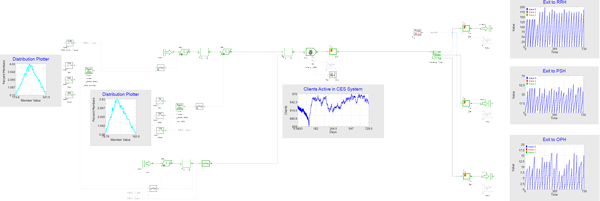 There is the understanding no one phase (System Load, System Flow, or System Resource Integration) is distinct or independent, but each phase, however, is a unique set of data to interpret to where this general plan is sensible. The majority of the Q3-2021 has focused on finalizing all phases and completing a draft Proof of Concept . All System Load and System FLow historical data have been correlated to random distributions to generate representative stochastic simulations. Some system resource capacities are still needed, and once obtained and integrated, the model will be tested and ideally utilized for predictive simulation in throughout Q4-2021
There is the understanding no one phase (System Load, System Flow, or System Resource Integration) is distinct or independent, but each phase, however, is a unique set of data to interpret to where this general plan is sensible. The majority of the Q3-2021 has focused on finalizing all phases and completing a draft Proof of Concept . All System Load and System FLow historical data have been correlated to random distributions to generate representative stochastic simulations. Some system resource capacities are still needed, and once obtained and integrated, the model will be tested and ideally utilized for predictive simulation in throughout Q4-2021
A draft Proof of Concept model in now in place and functioning. Once final resource capacities are integrated, testing and use will commence.
2021 • Quarter 2 progress
The model will be built in roughly (3) phases:
- System Load
- System Flow
- System Resource Integration
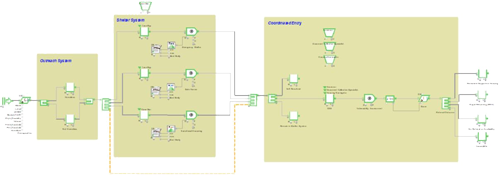 There is the understanding no one phase is distinct or independent, but each phase, however, is a unique set of data to interpret to where this general plan is sensible. The majority of the quarter has been spend on phase (2) as the system flow can be quite non-linear. Better metrics for the phase (1) system loads also have been obtained empirically to better define incoming client demographics.
There is the understanding no one phase is distinct or independent, but each phase, however, is a unique set of data to interpret to where this general plan is sensible. The majority of the quarter has been spend on phase (2) as the system flow can be quite non-linear. Better metrics for the phase (1) system loads also have been obtained empirically to better define incoming client demographics.
ExtendSim model progress • The core framework of the model is 75-85% based on client and process flow. The critical work remaining requires significant empirical data interpretation to create a realistic/stochastic process flow for each client. After completion of this, the complementary resource integration will follow to allow for resource optimization.
Ski Resort Management Faced with COVID-19 Restrictions
Alpine Skiing Resort Simulation: A COVID-19 Capacity Response
 Michael King & Karen M. King PhD
Michael King & Karen M. King PhD
George Mason University • School of Business
Department of Information Systems and Operations Management
Grant awarded: December 18, 2020
To be completed: May 2021
Project
Creating and implementing a discrete event simulation model can help a major North American ski resort, faced with COVID-19 restrictions and regulation, continue providing a superior experience to its skier customers.
Project description
A major North American ski resort is currently faced with extensive COVID-19 restrictions and regulations that directly reduce the available skier days capacity of the ski resort. The company is concerned and attempting to make strategic moves to meet the COVID-19 restrictions. By creating a discrete event simulation model, the company can manipulate a set of decision variables that directly affect several key performance indicators, skier visits, cycle times and wait times, all which determine customer satisfaction levels and revenue.
Questions this research will answer
- What set of decision variables can be optimized to meet corporate goals and appropriate customer satisfaction levels?
- What are the most important set of key performance indicators for ski report operations?
- What can the ski resort forecast as a sustainable capacity level of skier days?
How research strategy will be designed to help answer these questions
The first phase of this research project is to create a base discrete event simulation model, of a major ski resort, to measure mean skier rides per hour, mean cycle times and average wait times for each ski lift. The preliminary model, would use extensive skier ride data to develop the non-stationary Poisson arrival rates required for modeling each of the seven ski lifts in the resort. Having accurate historical data gathered by the RFID gate systems, supports the realistic development of skier arrival rates, and helps validate the simulation model.
The second phase of this research project is to optimize the effects of a set of decision variables on mean skier rides per hour, mean cycle times and average wait times for each lift as well as aggregate skier rides per hour. Currently there are five proposed decision variables each having several experimental levels. Servicescape constructs and SERVQUAL metrics will be evaluated. The optimization results will be used to make managerial recommendations of reasonable.
How ExtendSim will be used in this project
The ExtendSim platform will be utilized to create a discrete event model of a major ski resort ski lift system. The simulation model will provide a base level of descriptive key performance indicators. ExtendSim will be required to optimize the model using a set of operational decision variables.
What is unique about this project?
Although there has been extensive research and simulation conducted within the production and supply chain domain, in respect to the United States economy, simulation research related to the services sector lags behind. This is somewhat paradoxical, since the service sector represents over 75% of the United States labor force and approximately 75% of the United States Gross Domestic Product. To my knowledge, no discrete event simulation model of a ski resort system of ski lift exists. The extent that COVID-19 has affected the daily operations of the leisure industry is known, however the use of discrete event simulation with the goal of optimization is not known.
How will this project help others?
My wife and I are huge alpine skiers. We have been skiing for 40 plus years. We have even lived in the Rocky Mountain region of the United States at the base of a major mountain range with four world renowned skis resorts at our down steps! We are selfish to a degree, and expect ski resorts to be managed and operated with the efficiency of a production line. Unfortunately, like numerous areas in the leisure industry, the alpine skiing industry suffers from limited scientific operational modeling. The “good ole boy” method of ski resort management has lasted too long. Major resort consolidations, and new capital availability has helped the alpine skiing industry to invest in new technology, infrastructure, resulting with the ability of providing a more consistent consumer experience.
What impact will this research make to the existing current state of knowledge?
Creating the ability of rationalize capacity management for the alpine skiing industry based on the ability to:
- Meets COVID-19 reduced capacity requirements and peer resort guidelines.
- Provides a satisfactory service level to skiers, measured by cycle time and wait time.
- Provides a sustainable revenue stream for the resort.
Publications
King, Michael A., Abrahams, Alan S., Ragsdale, Cliff T. “Ensemble Methods for Advanced Skier Days Prediction.” Expert Systems with Applications, Volume 41, Issue 4, Part 1, March 2014.
Updates
September 29, 2021
Quarter 3 Progress
- Determined most interesting ski season days to model. Logic and rational developed.
- Revised list of key performance indicators.
- Revised list and number of most significant decision variables to model.
- Created database which contains the arrival rate date for 10 top skier days.
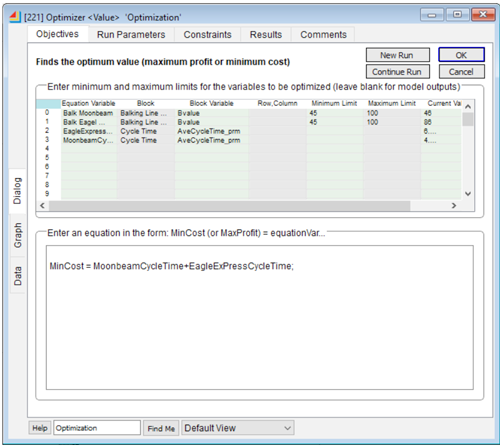 Create report output table of KPIs for 10 specific ski season days.
Create report output table of KPIs for 10 specific ski season days.
Unfortunately, while running optimization for specific simulation skier days, I determined that I had completely left one ski lift out of the simulation model. I have now revised the model to contain and model the correct number of lifts at the resort. I had to create the Non-stationary Poisson arrival rate for the newly added ski lift.
I've developed a working optimization table, with current objective function, and several decision variables. I am challenged at the moment, and working trial and error with the optimization process.
May 22, 2021
Quarter 2 Progress
- Literature review completed.
- Data collection review and verification completed.
- Non-stationary Poisson arrival rate data created.
- Determined key performance indicators.
- Determined five possible decision variables for resort management.
Future capacity management strategy and tactics developed, as ski report operation will not “go back to status quo” and will never be the same. Skiers now see that a more regulated and restricted capacity, delivers higher customer satisfaction. Resortsalso, note that annual passes will be required, as an industry paradigm shift, to help balance cash flow.
ExtendSim model progress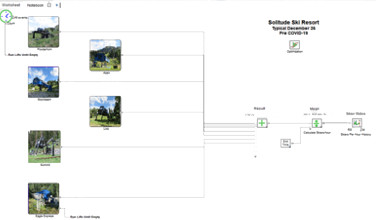 A hierarchical block based discrete event simulation model has been completed of the ski resort. Average ski lift line length and average cycle time analysis has been completed. Non-stationary Poisson arrival data entered into the model and verified.
A hierarchical block based discrete event simulation model has been completed of the ski resort. Average ski lift line length and average cycle time analysis has been completed. Non-stationary Poisson arrival data entered into the model and verified.
Phase Two, optimization, is the next major program goal. Decision variables have been determined based on resort key performance metrics.
